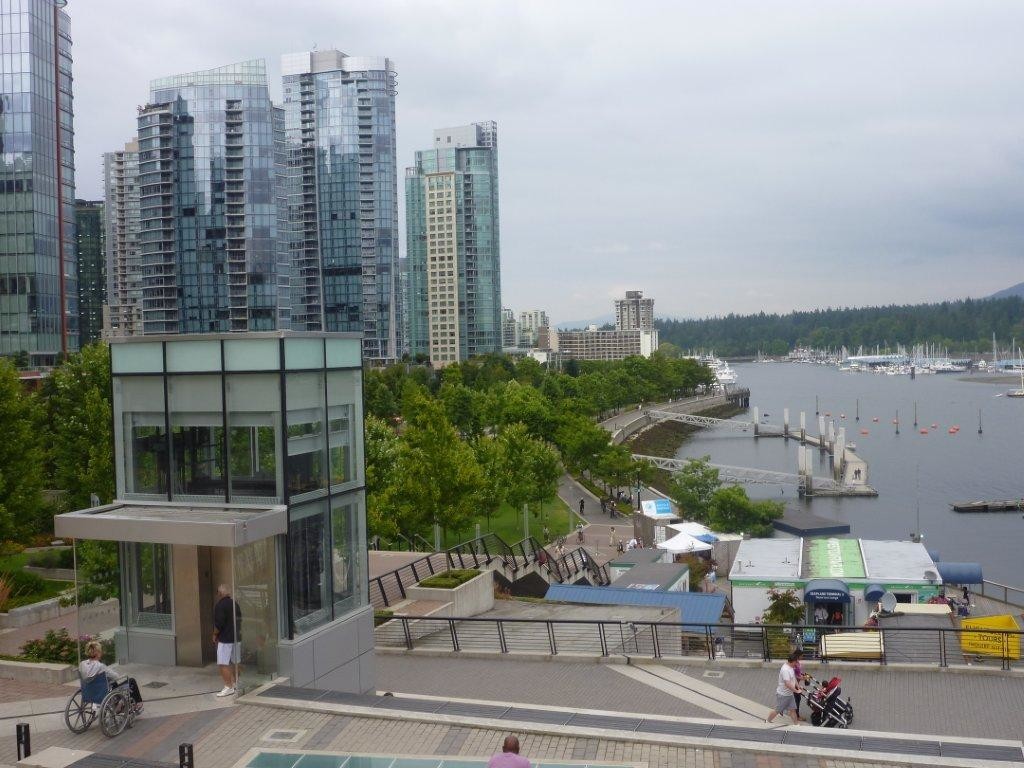Measuring Access by Proximity: Indicators of Car Free Living
The international Ecocity Standards (www.ecocitystandards.org) call for “Access by Proximity,” a design solution that enables people to meet their needs on a daily basis without relying on motor vehicles for transportation. This requires pedestrian oriented design (POD) to be the dominant focus in urban planning.
Many cities have pedestrian streets or pedestrian zones where several blocks are cordoned off to motor vehicle traffic. However, meeting the Ecocity 1 standard for access by proximity would mean that the majority of the city follows POD, enabling 86% of all trips to be made by walking, cycling and transit (Moore 2013). Such an approach requires thinking about mobility of the human body, not the car body.
With developed cities around the world showing signs of declining motor vehicle use since 2007 (Newman and Kenworthy 2011), the prospects for a shift toward POD seems hopeful. The indicators to measure such a shift could include: transportation mode split (the percentage of travel done by various modes of transportation such as walking, cycling, transit); average vehicle kilometers (or miles) travelled by car, rail, or plane; per capita car ownership; and walk score (safe walkable distances to a variety of services).
To meet the Ecocity 1 level of Access by Proximity in the Ecocity Standards requires that people can access the services they need on a daily basis through a combination of walking, cycling, and clean energy forms of public transit. This implies that a city at the Ecocity 1 level offers a very high walk score of 90-100 (RedFin 2016). It also implies a very low level of car ownership at 0.004 vehicles per capita (Moore and Rees 2013), representing a 96% reduction in global average, per capita motor vehicle ownership (Moore 2015). It also implies low use of motorized transportation, e.g., no more than 600 kilometers travelled by motor vehicle in a year and only 125 kilometers travelled by airplane (Moore 2015). When compared to an average 5,500-10,000 vehicle kilometers travelled and 2,250-3,500 air kilometers travelled in developed world economies, the reduction needed represents a 78% reduction in motor vehicle distances and a 79% reduction in airplane distances travelled. Put this all together and the result is a city with a very high walking, cycling and transit mode split at 86%, with the remaining 14% of motor vehicle trips undertaken by low or zero emission private vehicles or commercial vehicles predominantly serving goods movement and heavy utility purposes.
Many dense, mixed use cities such as Hong Kong and the central city district of Vancouver achieve the 86% mode split for walking, cycling and transit. The challenge is to engage suburban development in POD so that the city on the whole can achieve the Ecocity 1 level for Access by Proximity. This may prove challenging but the use of indicators to help measure progress can help.
Pedestrian Designed Mobility
To learn more about Ecocity Builders’ work and the development of the international Ecocity Standards visit: www.ecocitystandards.org.
References:
Moore, J. 2015. Ecological Footprints and Lifestyle Archetypes: Exploring Dimensions of Consumption and the Transformation Needed to Achieve Urban Sustainability. Sustainability 7 (4): pp. 4747-4763. Available online: http://www.mdpi.com/2071-1050/7/4/4747/htm.
Moore, J. 2013. Getting Serious about Sustainability: Exploring the Potential for One-Planet Living in Vancouver. Ph.D. Dissertation, School of Community and Regional Planning, University of British Columbia, Vancouver, BC, Canada, 29 August. Available online: http://elk.library.ubc.ca/bitstream/handle/2429/44943/ubc_2013_fall_moore_jennie.pdf?sequence=1.
Moore, J., Rees, W.E. 2013. Getting to One Planet Living. Chapter 4 in State of the World 2013: Is Sustainability Still Possible. Linda Starke (ed.), a World Watch Institute Report. Island Press: Washington DC, pp. 39-50.
Newman, P., Kenworthy, J. 2011. ‘Peak Car Use’: Understanding the Demise of Automobile Dependence. World Transport Policy and Practice 17 (2): pp. 31-42. Available online: http://espace.library.curtin.edu.au/R?func=dbin-jump-full&local_base=gen01-era02&object_id=183183
RedFin. 2016. How Walk Score Works. Online resource: https://www.redfin.com/how-walk-score-works





Sorry, the comment form is closed at this time.